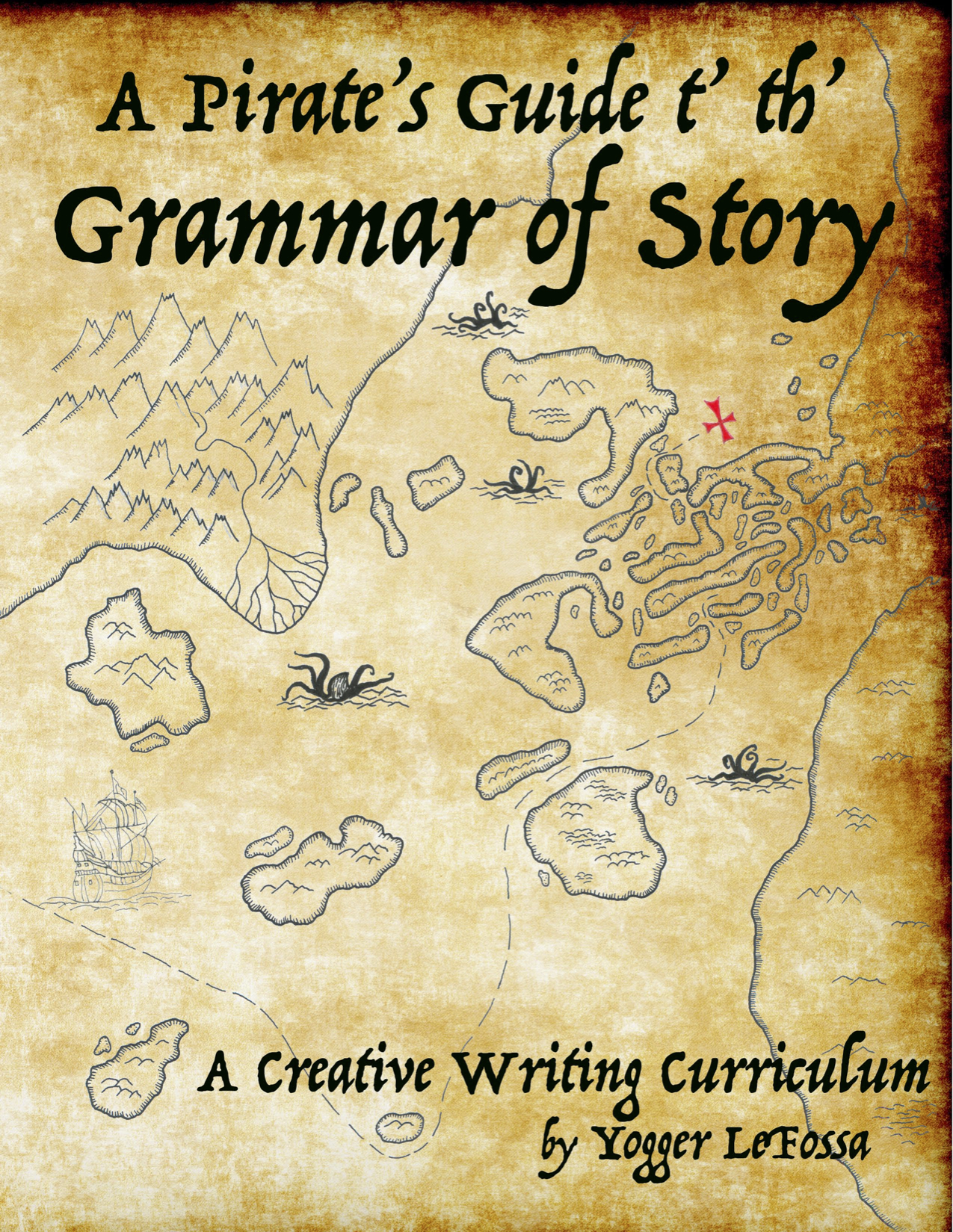How to Teach Creative Writing when you aren’t a Creative Writer
I recently shared about how to understand creative writing. Lots of parents want to add Creative Writing into their child’s education, but for many reasons, don’t feel qualified to teach it. But even understanding creative writing - learning the grammar of story - doesn’t make you an expert or ready to be a teacher.
That’s why we created A Pirate’s Guide t’ th’ Grammar of Story. This curriculum is unique in the creative writing field. Many resources are, honestly, boring. Many resources assume a foundational knowledge that isn’t there, and so frustrate both child and parent. This curriculum is grounded in the idea that the best way to learn creative writing is to understand the essential parts. And the best way to learn about them is not academically, in a dry, sterile way.
So this curriculum/workbook consists of two parts. One is a funny pirate story. The second is workbook style exercises. And the two overlap. We’ve taken this grammar of story, the 30+ story elements, and put it in an order, expressing each part first through the pirate story, and then through exercises. So, for example, the pirate story demonstrates what setting is, and then there are exercises that teach about setting. Setting is not taught in an academic way - it’s taught by having the student do it.
Because we don’t expect the parent/teacher to be or become an instant expert in creative writing, we made sure that all the teaching is contained within the material. Each teaching is just a short portion which contains the definition of what, for example, setting is. Then it goes into questions and exercises. It’s very straightforward. The exercises become more complex incrementally. You don’t need any kind of teaching lesson for how to do each new step, because you’ve done the step before and it’s very easy to add the next incremental step afterwards. Curious what this looks like? Check out our flip through video here.
Between each element is another portion of the story demonstrating the new element, followed by more exercises, each one building upon the last. Periodically there are reviews and challenges. Though the goal of the workbook is not a completed story, there are opportunities for the student to take all the creativity they are brainstorming and use them to write short stories throughout the book.
It’s incredibly simple for you as a parent, and approachable for your student.
